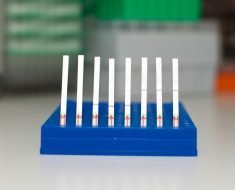
(HealthDay)—Sotagliflozin (SOTA), a dual sodium-glucose cotransporter 1 inhibitor (SGLT1i) and SGLT2i, is associated with short- and long-term renal hemodynamic changes in patients with type 1 diabetes, according to a study published online Aug. 1 in Diabetes Care.
Daniël H. van Raalte, M.D., Ph.D., from Amsterdam UMC, and colleagues randomly assigned 1,575 adults enrolled in the inTandem1 and inTandem2 trials to either SOTA 200 mg, 400 mg, or placebo in addition to optimized insulin therapy in a 52-week pooled analysis.
The researchers found a placebo-corrected least squares mean change from baseline in estimated glomerular filtration rate of −2.0 mL/min/1.73 m² (P = 0.010) and −0.5 mL/min/1.73 m² (P = 0.52) in response to SOTA 200 mg and 400 mg, respectively, at 52 weeks. The difference in systolic blood pressure was −2.9 and −3.6 mm Hg, respectively (both P < 0.0001); diastolic blood pressure changed by −1.4 and −1.6 mm Hg, respectively (P = 0.0033 and 0.0008, respectively). Urinary albumin-to-creatinine ratio (UACR) decreased by 23.7 and 18.3 percent (P = 0.054 and 0.18, respectively) for SOTA 200 mg and 400 mg, respectively, versus placebo in participants with baseline UACR ≥30 mg/g. For both SOTA doses, there were increases in serum albumin and hematocrit and reductions in uric acid throughout 52 weeks.
“Our data suggest that dual SGLT1 and SGLT2 inhibition has the potential to confer cardiorenal protection in ways analogous to selective SGLT2 inhibition in people with type 1 and type 2 diabetes,” the authors write.
Source: Read Full Article





